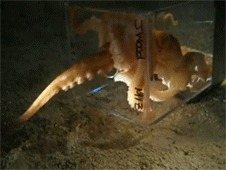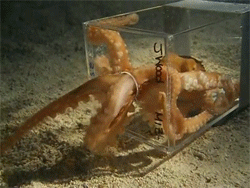“We Seem To Be Made To Suffer. It’s Our Lot In Life.” -C-3PO

“We seem to be made to suffer. It’s our lot in life.” -C-3PO
More Posts from Philosophical-amoeba and Others
Words to replace said, except this actually helps
I got pretty fed up with looking for words to replace said because they weren’t sorted in a way I could easily use/find them for the right time. So I did some myself.
IN RESPONSE TO Acknowledged Answered Protested
INPUT/JOIN CONVERSATION/ASK Added Implored Inquired Insisted Proposed Queried Questioned Recommended Testified
GUILTY/RELUCTANCE/SORRY Admitted Apologized Conceded Confessed Professed
FOR SOMEONE ELSE Advised Criticized Suggested
JUST CHECKING Affirmed Agreed Alleged Confirmed
LOUD Announced Chanted Crowed
LEWD/CUTE/SECRET SPY FEEL Appealed Disclosed Moaned
ANGRY FUCK OFF MATE WANNA FIGHT Argued Barked Challenged Cursed Fumed Growled Hissed Roared Swore
SMARTASS Articulated Asserted Assured Avowed Claimed Commanded Cross-examined Demanded Digressed Directed Foretold Instructed Interrupted Predicted Proclaimed Quoted Theorized
ASSHOLE Bellowed Boasted Bragged
NERVOUS TRAINWRECK Babbled Bawled Mumbled Sputtered Stammered Stuttered
SUAVE MOTHERFUCKER Bargained Divulged Disclosed Exhorted
FIRST OFF Began
LASTLY Concluded Concurred
WEAK PUSY Begged Blurted Complained Cried Faltered Fretted
HAPPY/LOL Cajoled Exclaimed Gushed Jested Joked Laughed
WEIRDLY HAPPY/EXCITED Extolled Jabbered Raved
BRUH, CHILL Cautioned Warned
ACTUALLY, YOU’RE WRONG Chided Contended Corrected Countered Debated Elaborated Objected Ranted Retorted
CHILL SAVAGE Commented Continued Observed Surmised
LISTEN BUDDY Enunciated Explained Elaborated Hinted Implied Lectured Reiterated Recited Reminded Stressed
BRUH I NEED U AND U NEED ME Confided Offered Urged
FINE Consented Decided
TOO EMO FULL OF EMOTIONS Croaked Lamented Pledged Sobbed Sympathized Wailed Whimpered
JUST SAYING Declared Decreed Mentioned Noted Pointed out Postulated Speculated Stated Told Vouched
WASN’T ME Denied Lied
EVIL SMARTASS Dictated Equivocated Ordered Reprimanded Threatened
BORED Droned Sighed
SHHHH IT’S QUIET TIME Echoed Mumbled Murmured Muttered Uttered Whispered
DRAMA QUEEN Exaggerated Panted Pleaded Prayed Preached
OH SHIT Gasped Marveled Screamed Screeched Shouted Shrieked Yelped Yelled
ANNOYED Grumbled Grunted Jeered Quipped Scolded Snapped Snarled Sneered
ANNOYING Nagged
I DON’T REALLY CARE BUT WHATEVER Guessed Ventured
I’M DRUNK OR JUST BEING WEIRDLY EXPRESSIVE FOR A POINT/SARCASM Hooted Howled Yowled
I WONDER Pondered Voiced Wondered
OH, YEAH, WHOOPS Recalled Recited Remembered
SURPRISE BITCH Revealed
IT SEEMS FAKE BUT OKAY/HA ACTUALLY FUNNY BUT I DON’T WANT TO LAUGH OUT LOUD Scoffed Snickered Snorted
BITCHY Tattled Taunted Teased
Edit: People, I’m an English and creative writing double major in college; I understand that there’s nothing wrong with simply using “said.” This was just for fun, and it comes in handy when I need to add pizzazz.


The Hippocratic Oath is one of the most famous pieces of medical writing, and it includes some of the basic ethical guidelines for medical practitioners. It is also constantly evolving. The images above come from a version of the oath that we found in the 1634 edition of Peter Lowe’s surgical text. If you compare it to this example of a modern version, you’ll notice some similarities and some differences. Both of them emphasize respecting the work of prior physicians and protecting the patient’s privacy. On the other hand, the modern oath doesn’t begin with an invocation to the gods, and it makes no mention of refusing to assist in abortions or any type of treatment that involves cutting. These changes illustrate how the practice of medicine, and what we expect of medical practitioners, changes over time.
New students at the Washington University School of Medicine are given the chance to devise their own student oath that is similar to the Hippocratic Oath. Take a look at the 2016 class oath here.



MALANG, INDONESIA
Kampung Warna-Warni (Village of Color)
This Indonesian village was revitalized by a vibrant rainbow paint job.
South of the city center in Malang, Indonesia, rows upon rows of monotonous white houses with brown roofs suddenly transform into a rainbow of vibrant colors bursting at every corner. What was formerly an impoverished village was transformed into an oasis of color and art, a project that has delighted visitors and revitalized the local community.
The village of Kampung Warna-Warni (Indonesian for “Village of Color”) was once drab and polluted, lacking the economic resources required to build a healthy community. But eight event management students from a nearby university lent a helping hand by applying their class skills to the real world. The students partnered with a local paint company looking to do a social responsibility project, which donated over 6,000 pounds of colorful paint, and voila, a hueless city got a brilliant new paint job.
Inspired by the favelas of Rio, every square inch of the rainbow village is coated in color, ranging from pastels of green and orange to pink and yellow. The bridge nearby the village is also painted, its beams erupting in magnificent blues and purples.
Although it may seem like the paint job would benefit visitors more than those actually living in the village, the makeover has revitalized the community. The beautiful colors improved the village’s standard of living by drawing in new tourist dollars, and the beauty of the colorful houses has inspired many community members to improve the sanitation of their river.

NCLEX Pharmacology Medical Suffixes
-amil = calcium channel blockers
-caine = local anesthetics
-dine = anti-ulcer agents (H2 histamine blockers)
-done = opioid analgesics
-ide = oral hypoglycemics
-lam = anti-anxiety agents
-oxacin = broad spectrum antibiotics
-micin = antibiotics
-mide = diuretics
-mycin = antibiotics
-nuim = neuromuscular blockers
-olol = beta blockers
-pam = anti-anxiety agents
-pine = calcium channel blockers
-pril = ace inhibitors
-sone = steroids
-statin =antihyperlipidemics
-vir = anti-virais
-zide = diuretics
The math trick that college will never teach you! : Parametric Integration
Parametric integration is one such technique that once you are made aware of it, you will never for the love of god forget it. It goes by many names : ‘Differentiation under the Integral sign’, ‘Feynman’s famous trick’ , ‘Parametric Integration’ and so on.
Let me demonstrate :
Now this integral might seem familiar to you if you have taken a calculus course before and to evaluate it is rather simple as well.

Knowing this you can do lots of crazy stuff. Lets differentiate this expression wrt to the parameter in the integral – s (Hence the name parametric integration ). i.e


Look at that, by simple differentiation we have obtained the expression for another integral. How cool is that! It gets even better.
Lets differentiate it once more:


.
.
.
If you keep on differentiating the expression n times, one gets this :

Now substituting the value of s to be 1, we obtain the following integral expression for the factorial. This is known as the gamma function.

There are lots of ways to derive the above expression for the gamma function, but parametric integration is in my opinion the most subtle way to arrive at it. :D
This is a really powerful technique and I strong suggest that if you have taken calculus, then please do read this article.
Have a great day!
EDIT: It had to be gamma(n+1) not gamma(n) .Thank you @mattchelldavis
Top 10 Most Uncomfortable Physics Facts
While physics can show us amazing things about our universe, it doesn’t always agree with how we think things should work. Sometimes, physics can be very counter-intuitive, and often unsettling. So, here’s my list of physics facts that can be a bit unnerving.
10: Weight doesn’t matter
If it wasn’t for air resistance, everything would fall at exactly the same speed. If you let go of a hammer and a feather from the same height at the same time on the Moon, they would hit the ground simultaneously.
9: Gyroscopic precession
It doesn’t matter how much you know about physics; gyroscopes are weird. The way they seem to defy gravity makes you rethink everything you know about physics, despite being fairly simple toys. Still, it’s all just Newton’s laws of motion.
8: Neutrinos and dark matter
We like to think that we can interact with most of the world around us, but this couldn’t be further from the truth. Neutrinos and dark matter are passing through your body right now, as if you weren’t even there. The fact that 65 billion neutrinos pass through each square centimeter of your body every second is weird enough, who knows what we’ll learn about dark matter.
7: Photons are particles
Light travels like a wave, but can only interact like a particle. It can interfere and have a frequency, but it can only take and give energy in discrete quantities. It behaves like nothing else in our macroscopic world, and can be very difficult to imagine.
6: Electrons are waves
We’ve established how photons act like waves and particles, but surely massive particles act normally. Nope! Even electrons have wave-like properties. In fact, everything acts like a wave! Except these waves come in discrete quantities, which we’ll call particles. This won’t get confusing.
5: E=mc^2
Einstein’s most famous contribution to physics states that matter is simply another form of energy, which has very profound consequences. A wound-up Jack-in-a-box would weigh ever so slightly more than a released Jack-in-a-box, due to the potential energy stored within.
4: Time is relative
The core of special relativity states that time passes differently for different observers. If you took a trip to Alpha Centauri at 99% the speed of light, everyone on Earth would see the trip take 4.4 years, while you would only experience 7.5 months. Time travel is real!
3: The (not so empty) vacuum
Something can be created from nothing, as long as it goes right back to being nothing quickly. In seemingly empty space, particles pop in and out of existence all the time as a result of the uncertainty principle. Not to mention, space is inflating at an accelerated rate due to “dark energy”. To the vacuum, the law of conservation of energy is more of a suggestion.
2: c is the fastest speed
Another important point in special relativity is that nothing could ever go faster than light. This doesn’t sit well with a lot of people, but the math doesn’t lie. To even get something with mass to travel at the speed of light would require infinite energy. Even if you somehow get around this, there are just too many mathematical problems with superluminal travel. Like it or not, the universe has a speed limit.
1: The cat is dead and alive
How could it not be this? The nature of quantum mechanics allows for objects to take on two seemingly contradictory states in a ‘superposition’. An electron can be in two places at once, or in a more extreme example, a cat can be both dead and alive. Of course, this weird property goes away once someone makes an observation. It’s as if there are tiny physics trolls messing with nature whenever we’re not looking.
Of course, there’s plenty more unsettling physics facts, like the space-bending nature of general relativity, or the “spooky action at a distance” that is quantum entanglement, but these are my top 10. I’d like to hear any unsettling physics facts you think I’ve missed, though!

Southeast Asia before ASEAN: An ASEAN 50 Commemorative Post
Ironically, the region of Southeast Asia was not an Asian concept. It was a Western one. It was perceived primarily through Western eyes as maps were created during the colonial rush to Asia from the 16th to the early 20th century. Hence, it originated as a geographical concept, having been rendered in different words by Western scholarship, especially before the Second World War– words such as “south east Asia”, “southeast Asia” or “south-east Asia.” In the 1930s for example, Southeast Asia was referred to as “Further India” (as if to allude that it’s near the Bay of Bengal, when it is not) or “Asia of the Monsoons” (to refer to the typhoons that frequently ravage the area.” The regional name’s gradual standardization (no longer in the lowercase “southeast”) and the dropping of the hyphen resulted in the name “Southeast Asia.” It was first used and asserted by the Americans, with its U.S. State Department’s “division of Southeast Asian Affairs” and came to be used frequently by the media as the Second World War sparked in the Pacific in 1941.
After the war, the term “Southeast Asia” transformed from a geographic entity to be referred to, to a complex and inchoate group of nations trying to redefine themselves in the world. As each one dropped their colonial fetters and became independent–Indonesia from the Dutch (17 August 1945), Vietnam from the British (2 September 1945), the Philippines from the United States (4 July 1946), Myanmar from the British (4 January 1948), Laos (22 October 1953) and Cambodia (9 November 1953) from the French, Singapore and Malaysia from the British (16 September 1956), Brunei from the British (1 January 1984), with Thailand successfully retaining its sovereignty, each one has tried to redefine their identities apart from their colonial past. With ideological conflicts in parts of Asia, a Southeast Asian integration seems far off.

*Front page of the Southeast Asia Collective Defense Treaty, 8 September 1954, from the Archives New Zealand. The first attempt at a Southeast Asian cooperation was done in 1954. The United States initiated an alliance that was meant to contain Communism in Asia, and hence, on 8 September 1954, the Southeast Asia Collective Defense Treaty (or the Manila Pact) was signed by only two Southeast Asian countries–the Philippines and Thailand–and joined by the United States, France, Great Britain, New Zealand, Australia, Thailand, and Pakistan. This established the Southeast Asian Treaty Organization or SEATO, where all member countries agree that if any one of them were attacked, all the other member countries would come to its defense–very similar to the North Atlantic Treaty Organization (NATO). But SEATO would end as a failure, for the simple reason that it was seen suspiciously by the rest of Southeast Asia as “a fig leaf for the nakedness of American policy.” Pakistan withdrew in 1972, and France in 1975.

*Philippine President Macapagal, Indonesian President Sukarno and Malaysian Prime Minister Tunku Abdul Rahman signing agreements forming the MaPhiLindo on 5 August 1963 at the Juan Luna Hall of the Department of Foreign Affairs in Manila, from the Malacañang Presidential Museum and Library.

*The Philippine Commonwealth Government-in-Exile proposed a union with Indonesia in 1943, a Pan-Malayan principle reflected in this part of an American 1942 map entitled “Outline of the Post-War New World Map,” a proposed political boundary map at the event that the Allied forces would win World War II. The one marked in blue are the proposed American protectorates of the post-war world.
At almost the same time, another effort was put in at the time of President Diosdado Macapagal. Coming from our commonality as Malays (with the vision of the late President Manuel L. Quezon for a Pan-Malayan nationhood), President Macapagal envisioned a cooperation with other Malay countries. Hence, Macapagal convened a summit in Manila, together with Malaysian Prime Minister Tunku Abdul Rahman and Indonesian President Sukarno, where they signed the Manila Accord on 5 August 1963, addressing controversial issues over North Borneo and Sarawak joining the Federation of Malaysia. The Accord established the Maphilindo, striving for “Asian solutions by Asian nations for Asian problems.” However, this was also seen as a move by the Philippines and Indonesia to stall or halt the formation of the Federation of Malaysia, which eventually happened on 16 September 1963. Indonesia pulled out of the organization, in reaction to Malaysia’s formation which was seen by Indonesia as a threat to its sovereignty, hence the org’s dissolution.

*The five “Founding Fathers” of the ASEAN, signing the Bangkok Declaration, also known as the ASEAN Declaration, on 8 August 1967. From the ASEAN Archive.
This explains the tensed environment that the five Foreign Ministers of Southeast Asia found themselves in on 8 August 1967 in the Thai Department of Foreign Affairs in Bangkok, Thailand. Carefully, and diplomatically, these representatives from Indonesia (Adam Malik), Malaysia (Tun Abdul Razak), Singapore (S. Rajaratnam), Philippines (Narciso Ramos) and Thailand (Thanat Khoman), sat down together, chose their words carefully, patiently wrestled on their issues through dialogue, and bravely met on common ground. It entailed a larger vision, one that did not only concern each of their nation’s concerns, but one that gave space to regional unity in spite of their differences. Rajaratnam said to his counterparts on that day:
We must think not only of our national interests but posit them against regional interests: that is a new way of thinking about our problems. And these are two different things and sometimes they can conflict. Secondly, we must also accept the fact, if we are really serious about it, that regional existence means painful adjustments to those practices and thinking in our respective countries. We must make these painful and difficult adjustments. If we are not going to do that, then regionalism remains a utopia.
“Painful adjustments” indeed. After all was said and done, the five Foreign Ministers, representing their heads of state, after months of negotiations and compromise, finally and unequivocally signed the two-page ASEAN Declaration, establishing the Association of Southeast Asian Nations, and committing themselves to resolving disputes by peaceful means and through hard but committed mutual accommodation. Bereft of the colonial baggages of the previous southeast asian intergovernmental organizations, it was Southeast Asian, from the inception of the idea to its founding.
The founding of the ASEAN in 1967 led to the diplomatic reconciliation between Malaysia and Indonesia, and Malaysia and Singapore. And while a year later, Malaysia temporarily severed its diplomatic relations with the Philippines due to claims over Sabah, this kind of issues never impeded the commitment the two nations have in ASEAN, so was with the other member-states with similar problems. Since then, ASEAN has grown into a 10-member-state organization. This probably explains why ASEAN is “the most successful inter-governmental organization in the developing world today.”
In the occasion of the Philippine Chairmanship of the ASEAN and its 50th founding anniversary, Happy ASEAN 50th!

*Banner from ASEAN 50 Facebook.
*Post-script: The deafening silence of the Philippines with its unprecedented win in the arbitration ruling in the ASEAN meetings ought to make people question our foreign policy. Insisting on our sovereign rights over our EEZ does not mean war-mongering. Vietnam, on the other hand, the nation that defeated the United States in the Vietnam War, still insists the rule of law thus challenging Chinese encroachment diplomatically. It exemplifies a fair and “independent foreign policy.” The Philippines should follow Vietnam’s example.
*Map above: “South-east Asia” map made by Polish Army Topography Service as featured in Pergamon World Atlas in 1967, the year ASEAN was founded. From the David Rumsey Historical Map Collection.
Follow me on Facebook at facebook.com/indiohistorian
Where does the word ‘meme’ come from?

The word meme was originally coined in the 1970s by sociobiologist, Richard Dawkins, from the ancient Greek for imitation.

He used it to describe how ideas and symbols propagate through a culture like genes through a population.

With the advent of the Internet, the process became directly observable in how jokes and images were popularized at lightning speed and soon the word came to refer to a certain kind of image.

So ‘meme’ not only describes how words become part of language, the word is a meme itself. As it turns out, there’s a word for words that describe themselves: ‘autological’.

Spread the word! ;)
From the TED-Ed Lesson Where do new words come from? - Marcel Danesi
Animation by TOGETHER











Singapore Food (in Manga/Anime) Appreciation Post!
(Also: Onion Chopping Ninja Reveals Her Timezone!)
It’s Singapore’s National Day today (9th Aug) and I was going to do a Singaporean-based Recipe, (like Hayama’s Curry Fish Head), but didn’t have time to, so here’s a Singapore Food in Manga/Anime Appreciation Post - from Kuragehime, Shokugeki no Souma, and Addicted to Curry!
The Singaporean food that is usually shown in manga/anime is usually either curry-based or chicken rice. And of course, I don’t usually make them at home because: 1. They’re easier to make in bulk 2. You can get them cheaper outside 3. My version would pale in comparison to the masters’ 4. It requires hours of preparation, except for some of the easier curry dishes in Addicted to Curry. (A manga cap of the recipe is above!)
Addicted to Curry lists Singapore as Curry Central, and I never realized how true that was until I went abroad for a couple of years and missed how we would just drown everything in curry, especially for mixed rice dishes like Chap Chye Png and Nasi Briyani. There was also a huge uproar when McDonald’s ran out of Curry Sauce for McNuggets (they have since started selling it in bottles), and a near-riot when a neighbour complained about the smell of another neighbour cooking curry. Also, Gordon Ramsay can’t beat our laksa, even though I think that particular store he challenged isn’t the best one.
(Not everything is curry, of course, but if there’s no curry, generally, there must be chili. And woe betide those who eat the wrong kind of chili with the wrong kind of food. And here’s a PSA for foreigners - Chili Crab is largely for tourists. Take Black Pepper Crab or Salted Egg Crab instead. It’s possible to live as a weak sauce who can’t take spicy foods here, but less exciting. )
Happy 51st Birthday, Singapore! Here’s to the spread of our food all over the world! And a birthday wish would be for more kinds of our food to be shown in manga/anime. :D - O.C.N.

PS: By the way, Eizan Senpai, you can get Hainanese Chicken Rice for $3, and it is considered Street Food even though there are $30+ versions at hotels. Never eaten one with Jidori Chicken, though.
-
 fansblogs reblogged this · 3 months ago
fansblogs reblogged this · 3 months ago -
 fansblogs liked this · 3 months ago
fansblogs liked this · 3 months ago -
 felinelun liked this · 2 years ago
felinelun liked this · 2 years ago -
 hyperfix8edcryptid reblogged this · 2 years ago
hyperfix8edcryptid reblogged this · 2 years ago -
 hyperfix8edcryptid liked this · 2 years ago
hyperfix8edcryptid liked this · 2 years ago -
 honesttoglob reblogged this · 3 years ago
honesttoglob reblogged this · 3 years ago -
 honesttoglob liked this · 3 years ago
honesttoglob liked this · 3 years ago -
 ace-of-foxes liked this · 3 years ago
ace-of-foxes liked this · 3 years ago -
 embracethenerd2012 reblogged this · 3 years ago
embracethenerd2012 reblogged this · 3 years ago -
 tortiefrancis liked this · 3 years ago
tortiefrancis liked this · 3 years ago -
 microwave-radiation liked this · 3 years ago
microwave-radiation liked this · 3 years ago -
 cosmik-homo reblogged this · 3 years ago
cosmik-homo reblogged this · 3 years ago -
 theabsolutebuffoon liked this · 3 years ago
theabsolutebuffoon liked this · 3 years ago -
 thatguywiththegreyheart liked this · 4 years ago
thatguywiththegreyheart liked this · 4 years ago -
 hxllo-nurse-archived liked this · 4 years ago
hxllo-nurse-archived liked this · 4 years ago -
 song-birds-stuff liked this · 4 years ago
song-birds-stuff liked this · 4 years ago -
 jamie-goblin-child liked this · 5 years ago
jamie-goblin-child liked this · 5 years ago -
 https-cryptill liked this · 5 years ago
https-cryptill liked this · 5 years ago -
 angelmayy liked this · 5 years ago
angelmayy liked this · 5 years ago -
 sheriffclownkins liked this · 5 years ago
sheriffclownkins liked this · 5 years ago -
 nervousspacerobot liked this · 5 years ago
nervousspacerobot liked this · 5 years ago -
 kaijuguy19 reblogged this · 5 years ago
kaijuguy19 reblogged this · 5 years ago -
 saperion reblogged this · 5 years ago
saperion reblogged this · 5 years ago -
 weirdandwonderful9998 liked this · 5 years ago
weirdandwonderful9998 liked this · 5 years ago -
 sirmacguffin reblogged this · 5 years ago
sirmacguffin reblogged this · 5 years ago -
 sirmacguffin liked this · 5 years ago
sirmacguffin liked this · 5 years ago -
 inkplotkey reblogged this · 5 years ago
inkplotkey reblogged this · 5 years ago -
 inkplotkey liked this · 5 years ago
inkplotkey liked this · 5 years ago -
 filia-secunda liked this · 5 years ago
filia-secunda liked this · 5 years ago -
 agentark liked this · 5 years ago
agentark liked this · 5 years ago -
 groupies-do-it-better liked this · 5 years ago
groupies-do-it-better liked this · 5 years ago -
 lafy-taffy liked this · 5 years ago
lafy-taffy liked this · 5 years ago -
 fhinni liked this · 5 years ago
fhinni liked this · 5 years ago -
 demondoxable liked this · 5 years ago
demondoxable liked this · 5 years ago -
 i-dont-have-a-care-in-the-world liked this · 5 years ago
i-dont-have-a-care-in-the-world liked this · 5 years ago -
 ourprincess-leia-blog reblogged this · 5 years ago
ourprincess-leia-blog reblogged this · 5 years ago -
 bonavitaetgaudium liked this · 5 years ago
bonavitaetgaudium liked this · 5 years ago -
 cooldude1246 liked this · 5 years ago
cooldude1246 liked this · 5 years ago -
 mellow-numel liked this · 5 years ago
mellow-numel liked this · 5 years ago -
 sparkya8 liked this · 5 years ago
sparkya8 liked this · 5 years ago -
 sydsquidcrocker liked this · 5 years ago
sydsquidcrocker liked this · 5 years ago -
 richard-is-bored reblogged this · 5 years ago
richard-is-bored reblogged this · 5 years ago -
 richard-is-bored liked this · 5 years ago
richard-is-bored liked this · 5 years ago -
 uncreative-lily reblogged this · 5 years ago
uncreative-lily reblogged this · 5 years ago
A reblog of nerdy and quirky stuff that pique my interest.
291 posts







